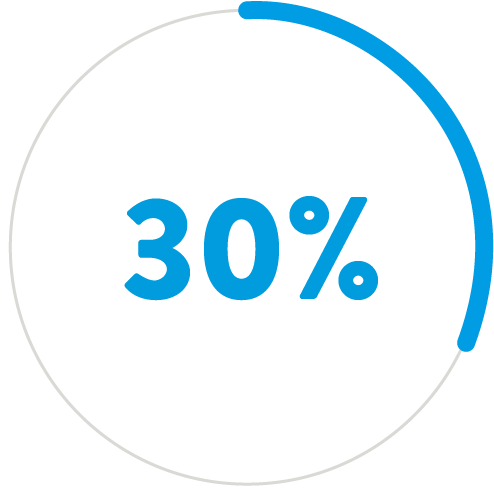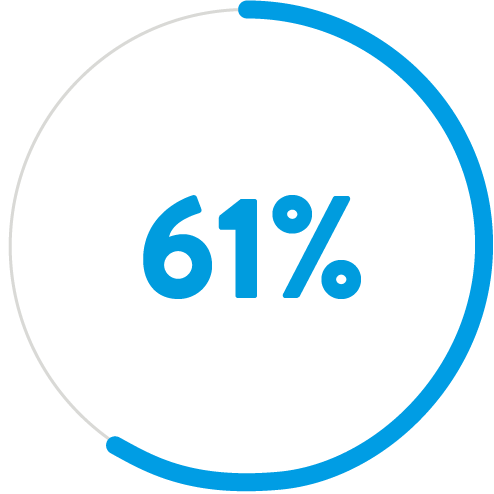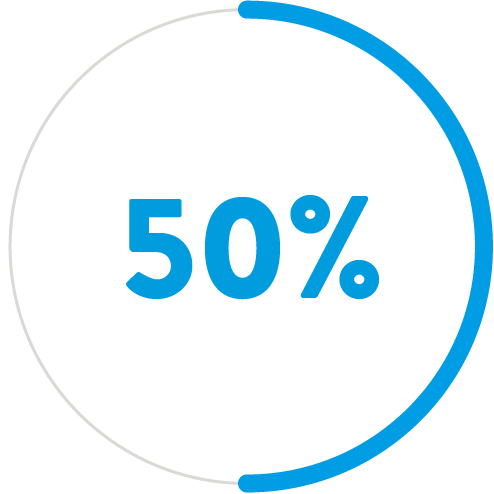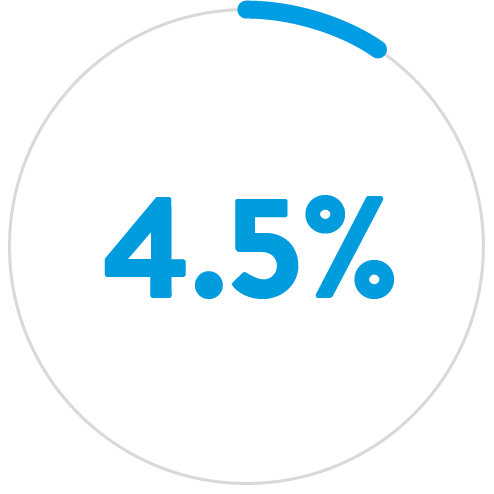HEART DEFECTS
Congenital heart defects are the most common type of birth defect. Defects that involve the wall or vessels of the heart include atrial septal defect (ASD), ventricular septal defect (VSD), and patent ductus arteriosus (PDA). In certain situations, guidelines recommend surgery or transcatheter device closure to repair the defect and prevent complications.1
With over 20 years of demonstrated clinical experience, the Amplatzer™ Septal Occluder is the standard of care for minimally invasive atrial septal defect (ASD) closure, with a variety of sizes and features that facilitate precise placement.
ATRIAL SEPTAL DEFECT (ASD)
Incidence, morbidity, and mortality with Atrial Septal Defect

Among congenital heart disease diagnosed in adulthood, 30%-40% are ASD2,3

In pediatric patients, 61% of ASDs present as complex lesions4

Adults with unrepaired secundum defect have reduced exercise capacity of 50%-60%2

Untreated large secundum ASD annual mortality rates2:
For patients in their 40s: 4.5%
For patients in their 60s: 7.5%
One study examined long-term mortality of adult ASD patients with and without closure of the defect. The findings reveal that mortality overall was higher among ASD patients without closure compared to patients who had ASD closure, and cardiac deaths were significantly higher (p < 0.01). For instance, heart failure accounted for 12% of deaths in non-closure patients vs 2.5% among patients who had ASD closure.5
TV
- Stout KK, Daniels CJ, Aboulhosn JA, et al. 2018 AHA/ACC Guideline for the Management of Adults with Congenital Heart Disease: a report of the American College of Cardiology/American Heart Association Task Force on Clinical Practice Guidelines. Circulation. 2018;000:e000-e000. doi: 10.1161/CIR.0000000000000603
- Geva T, et al. Atrial septal defects. Lancet. 2014;383:1921-1932.
- Adler DH. Atrial septal defect. Medscape. emedicine.medscape.com/article/162914-workup.
- Shuler CO, et al. Prevalence of treatment, risk factors, and management of atrial septal defects in a pediatric Medicaid cohort. Pediatr Cardiol. 2013;34(7):1723-1728. doi: 10.1007/s00246-013-0705-5.
- Nyboe C, et al. Long-term mortality in patients with atrial septal defect: a nationwide cohort-study. Eur Heart J. 2018;39:993-998. doi:10.1093/eurheartj/ehx687.
- Kashour TS, et al. Successful percutaneous closure of a secundum atrial septal defect through femoral approach in a patient with interrupted inferior vena cava. Congenit Heart Dis. 2010;5:620–623.
- Stout KK, et al. 2018 AHA/ACC Guideline for the Management of Adults with Congenital Heart Disease: a report of the American College of Cardiology/American Heart Association Task Force on Clinical Practice Guidelines. Circulation. 2018;000:e000-e000. doi: 10.1161/CIR.0000000000000603.


